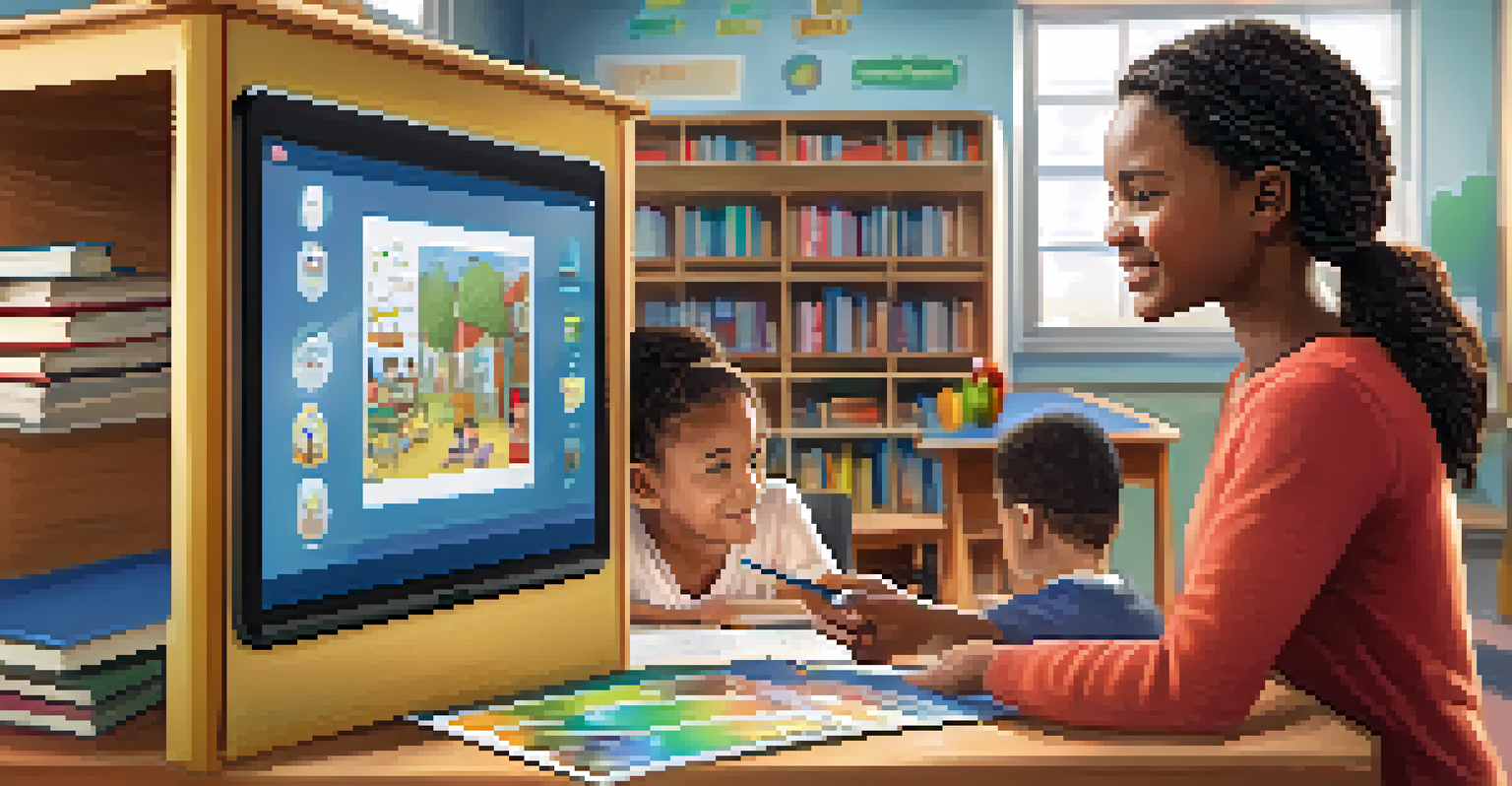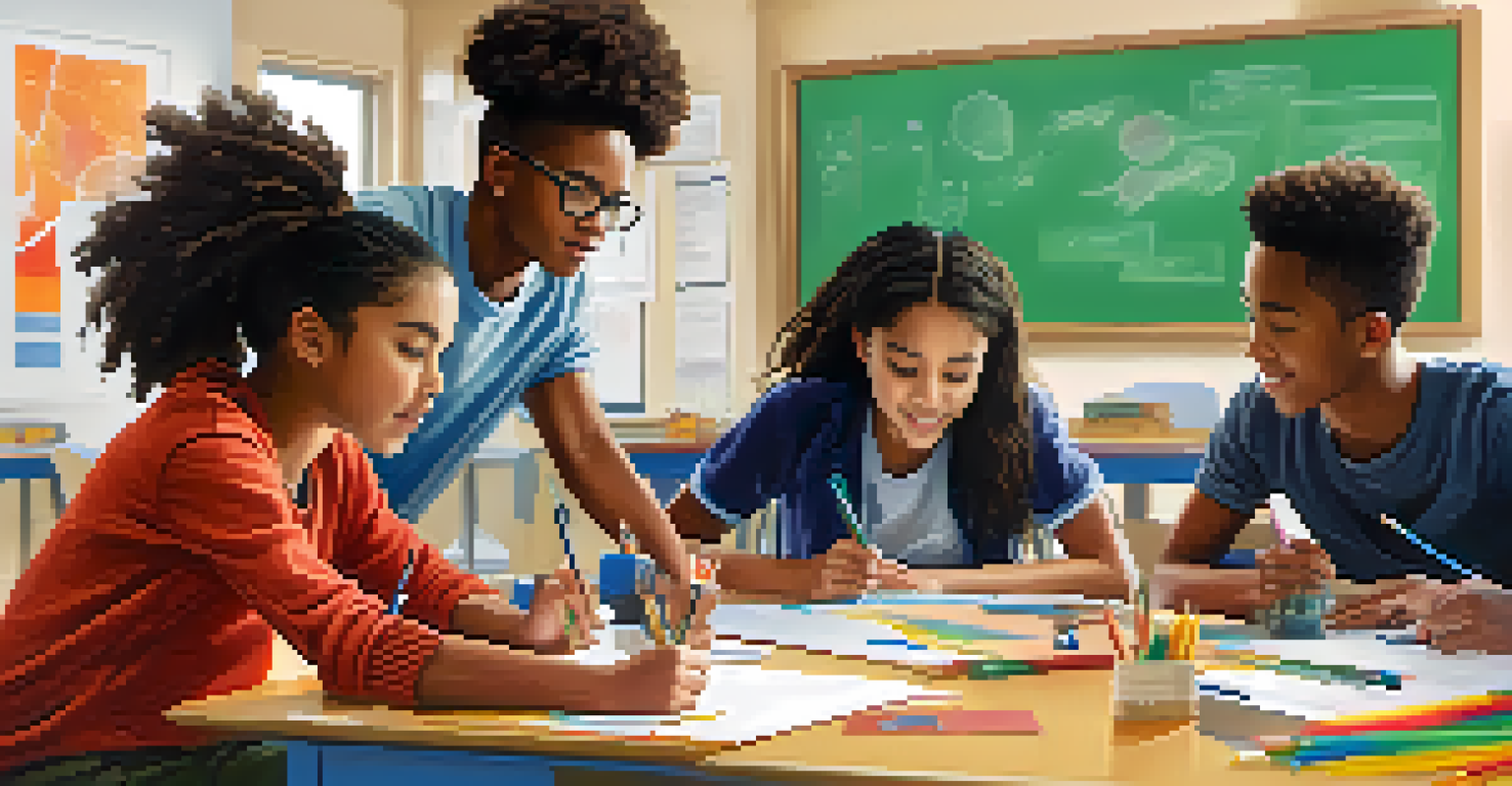Personalized Learning and Its Role in Reducing Achievement Gaps

Understanding Personalized Learning and its Importance
Personalized learning tailors education to meet individual students' needs, interests, and learning styles. Imagine a classroom where each student learns at their own pace and in their unique way—this is the essence of personalized learning. It transforms the traditional 'one-size-fits-all' approach into a more dynamic and engaging experience.
Education is the most powerful weapon which you can use to change the world.
By focusing on the individual, educators can better address diverse learning challenges. For instance, a student struggling with math might receive targeted resources, while an advanced learner can explore more complex topics. This flexibility allows each student to thrive, making learning more effective and enjoyable.
The significance of personalized learning has become even more apparent in discussions about educational equity. By providing tailored support, we can help ensure that every student, regardless of their background, has the opportunity to succeed academically.
The Achievement Gap: What It Is and Why It Matters
The achievement gap refers to the persistent disparity in academic performance between different groups of students, often based on socioeconomic status, race, or ethnicity. This gap can lead to significant long-term consequences, affecting college readiness and future career opportunities. Understanding the origins of this gap is crucial for developing effective solutions.

Factors contributing to the achievement gap include unequal access to resources, varying levels of parental support, and differences in school funding. These disparities can create significant barriers for students from disadvantaged backgrounds. Recognizing these challenges is the first step toward addressing them.
Personalized Learning Enhances Equity
By tailoring education to individual needs, personalized learning helps bridge the achievement gap and supports diverse student backgrounds.
Addressing the achievement gap is not just an educational issue; it's a societal one. When we close this gap, we foster a more equitable society, empowering all students to reach their full potential and contribute positively to their communities.
How Personalized Learning Can Address the Achievement Gap
Personalized learning offers a powerful strategy for addressing the achievement gap by meeting each student where they are. By focusing on the unique needs of students, educators can provide targeted interventions that help bridge the gap. For example, a student who struggles with reading can benefit from customized reading exercises that build their confidence and skill level.
Every student can learn, just not on the same day, or the same way.
This approach not only improves academic outcomes but also enhances student engagement. When students feel that their learning experiences are relevant to their lives and tailored to their needs, they are more likely to stay motivated and invested in their education. This intrinsic motivation is vital for overcoming barriers to learning.
Moreover, personalized learning fosters a supportive environment where students can collaborate and learn from one another. Group projects and peer tutoring can be tailored to maximize strengths and address weaknesses, promoting a sense of community and shared responsibility for learning.
The Role of Technology in Personalized Learning
Technology plays a pivotal role in the implementation of personalized learning strategies. With tools like adaptive learning software, educators can provide customized resources that adapt to each student's progress. This technology enables real-time feedback and adjustments to learning paths, ensuring that students receive the support they need when they need it.
For example, platforms that track student performance can help teachers identify areas where students are struggling. This data-driven approach allows educators to intervene promptly and provide tailored resources, making learning more effective. Technology also allows for a diverse range of learning materials, catering to different interests and learning styles.
Technology Supports Personalized Learning
Adaptive learning tools allow educators to provide real-time feedback and customized resources, enhancing the learning experience for each student.
However, it's important to remember that technology should enhance, not replace, the human element of education. While tools and platforms are valuable, the role of the teacher in guiding and supporting students remains irreplaceable. A balanced approach that combines technology with personal interaction is key to successful personalized learning.
Challenges in Implementing Personalized Learning
While personalized learning has great potential, there are challenges in its implementation. One major hurdle is the need for professional development for educators. Teachers must be equipped with the skills and knowledge to effectively tailor their instructional methods to meet individual student needs.
Additionally, schools may encounter resistance to change from various stakeholders, including parents and administrators. Some may be hesitant to adopt new methods that deviate from traditional teaching practices. Clear communication about the benefits of personalized learning is essential to build support and encourage a collaborative effort.
Finally, resource allocation can pose a challenge. Schools need access to technology, materials, and training to implement personalized learning effectively. Investing in these resources is crucial for overcoming barriers and ensuring that all students benefit from this innovative approach.
Success Stories: Real-World Applications of Personalized Learning
Across the country, schools are seeing the positive impact of personalized learning through success stories. For example, a district in California implemented personalized learning strategies that led to significant improvements in student performance, particularly among underrepresented groups. This transformation highlights the potential of personalized learning to make meaningful changes in educational outcomes.
Another inspiring instance comes from a school in New York that incorporated personalized learning in its curriculum, resulting in increased student engagement and higher test scores. Teachers reported that students were more motivated to learn and take ownership of their education, showcasing the power of customized instruction.
Challenges in Implementation Persist
Despite its benefits, personalized learning faces hurdles such as the need for teacher training, resource allocation, and stakeholder resistance.
These success stories not only demonstrate the effectiveness of personalized learning but also provide a roadmap for other schools looking to implement similar strategies. By sharing these experiences, educators can inspire one another and work collaboratively to close the achievement gap.
Looking Ahead: The Future of Personalized Learning
As we look to the future, the potential for personalized learning to close achievement gaps is promising. With advancements in technology and a growing understanding of diverse learning needs, educators are better equipped than ever to provide tailored instruction. The focus is shifting towards creating more inclusive and equitable educational environments.
Moreover, ongoing research and data collection will continue to inform best practices in personalized learning. By analyzing what works and what doesn't, schools can refine their strategies to maximize effectiveness. This iterative process is vital for ensuring that personalized learning meets the evolving needs of students.

Ultimately, the future of education lies in embracing the uniqueness of each student. By prioritizing personalized learning, we can create a more equitable educational landscape where every student has the opportunity to succeed, regardless of their background.